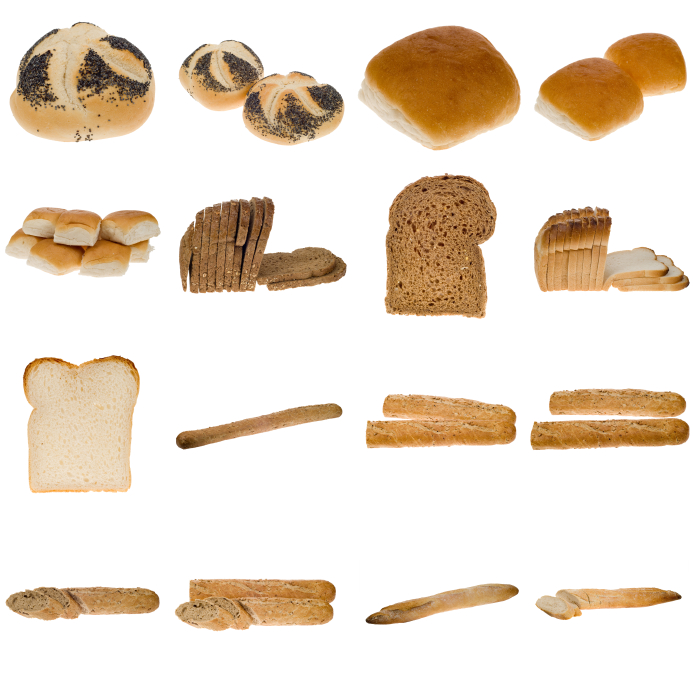
Yep, that’s right—all natural, unhealthy whole grains. There are many reasons why you shouldn’t eat cereal grains. They’re filled with immune aggravating proteins and insulin spiking properties that make you fat, and they have almost no nutritional value, leaving you with a bunch of empty calories. To clarify, I’m talking about all grains (which contain these properties in varying degrees) including wheat, corn, oats, barley, rice, rye, and millet as well as grain like seeds like quinoa, buckwheat, and amaranth.
“But all the marketing I see says we need grains to survive.” OK, if that’s true, what did we do as a species for two million years before the Neolithic era? How did we get by on just meat, fruit, nuts, seeds, and water? (Oh yeah, we also got by without sun block, but that’s another article!)
The answer is just fine. Actually, we got along better than when we started eating grains. Before we became an agrarian culture, anthropologists say we didn’t have any evidence of a host of modern ailments including cancer, diabetes, arthritis, tooth decay, osteoporosis, and inflammatory disease. So what’s so bad about cereal grains?
Let’s take gluten to start. Gluten is something that has recently been marketed as evil, and that’s a good thing. Gluten is a large, water soluble protein that often mimics similar proteins found in bacteria and viruses. How do you think your body reacts to that? With an immune or inflammatory response. You guessed it—a gluten allergy.
Cereal grains contain substances called phytates, which are essentially mineral blockers. Phytates bind with minerals such as zinc, calcium, and magnesium in your intestines making them more difficult for your body to absorb. This is even true for whole grains or grains that aren’t as processed. You know—those that are usually marketed as the “healthier choice.” Unfortunately, people often replace naturally nutritious fruits and vegetables with bread. They eat a big bowl of cereal for breakfast as opposed to a big bowl of fruit. Most bread has almost no vitamin content unless it has been added or fortified. The added vitamins aren’t as readily absorbed as the vitamins you find occurring naturally in fruits and vegetables.
Let’s move on to lectin, a substance that plants have evolved to use to ward off insect predators. Lectin actually makes the intestine more permeable by binding to cell receptors on the intestine wall where absorption takes place. As a result, undigested food proteins and remnants of gut bacteria are allowed to enter the bloodstream. The unfortunate part is that some of these substances resemble our body’s own tissues (molecular mimicry), causing the immune system to get confused. As such, the body goes into defense mode and attacks similar looking tissue from our body, which can lead to a host of autoimmune diseases including rheumatoid arthritis, ulcerative colitis, gingivitis, MS, and type 1 diabetes.
Grains cause a spike in insulin. So man’s first processed food is just that—an insulin spiker. OK, it isn’t as bad as a candy bar or a glass of soda. However, when you take grains from their natural state, heat them, and then roll them or mill them, you’re refining and processing them, putting them in a state that is easier for our bodies to digest. Again, we’re introducing something that our bodies didn’t evolve to eat. If you think of simple supply and demand principles, the process of milling makes the grains absorbable. Glucose has just been expedited. With this excess supply, our body has to compensate by releasing insulin at a faster rate. Odds are you can eat bread and oatmeal more quickly and in greater quantities than you could a handful of wheat kernels or, more appropriately, a fibrous vegetable yielding a very low digestible carbohydrate with a good deal of indigestible carbohydrate. So what happens when we choose the former over the latter? Our body experiences an unnatural insulin spike and a glycemic load that a dump truck couldn’t haul.
A common response to all this is “I need carbs. Otherwise, I will be in a state of ketosis and that’s a bad thing!” No, don’t confuse ketosis with ketoacidosis (which is another article). An absence of cereal grains doesn’t mean you aren’t getting any carbs. Simply, you aren’t introducing processed carbs loaded with anti-nutrients into your body. If you can’t pluck it and eat it, you should probably question if you need it at all. When is that piece of bread really appealing? Only once we add butter and salt, which caters to our evolutionary craving for fat. Once we sweeten that bread with jelly, it appeals to our natural craving for sweetness in fruits. Yes, I love doughnuts and breadsticks, too, but that’s why.
There is a wealth of unpopular information out there, mostly because there is a lot of money being made off grains. I understand that. However, I encourage you to read books by Dr. Cordain or Dr. Eades, whose own writings were heavily sourced in the composition of this article. If you have access, simply pick up a college biology book and read up on basic biological mechanisms. It’s all in there. You can visit my website for a list of worthwhile books and movies on the subject as well as a number of reviews.









